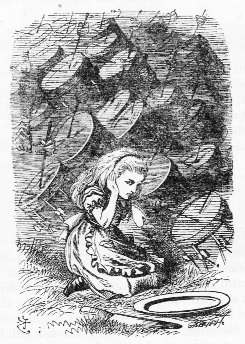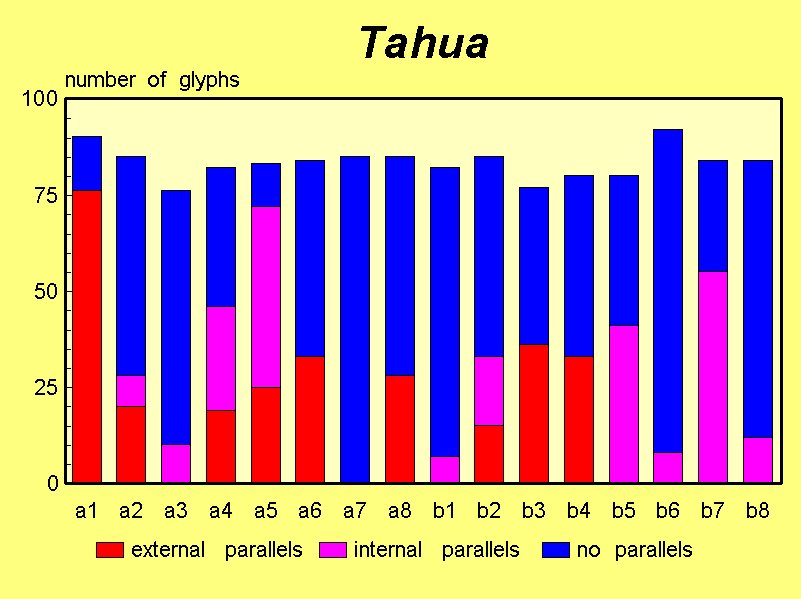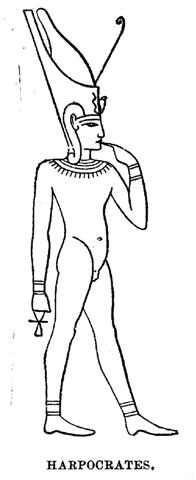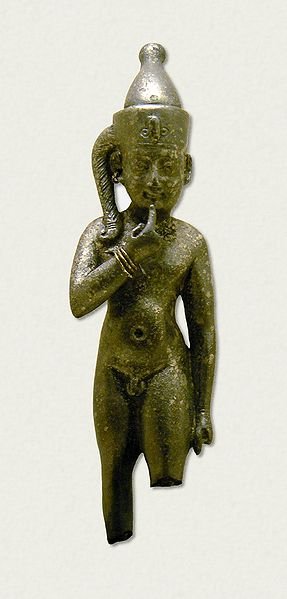|
TAHUA II
53 Thus there seems to be no obvious need to change the dates or the numbers which I here earlier have documented:
And we should therefore confidently move on past the end of side a on the C tablet, because here - I have suggested - we could possibly find a way to the beginning of the A text (after the end of its side a). For Metoro had began reading from Ab1-1 and there told Bishop Jaussen about maeva, Which he also did early on side b of the C tablet. Nowhere else in his readings for Bishop Jaussen did he use this word. ... As Metoro said when reading the text on the tablet for Bishop Jaussen on Tahiti and he reached the beginning of side b: ... rutua - te pahu - rutua te maeva ... (the drums were sounding because the sky was moving) ...
We can now add that the viri glyph type probably indicated '29', i.e. a dark place for re-creation (→ Ohiro, Mercury). ... When the old woman (somewhere in the Mediterranean area) was asked what 29 meant she chuckled and formed a round opening between her left forefinger and thumb through which she then repeatedly pushed her right forefinger ...
... What is this cry which our primitive islanders share with the animals? Look at its elements, all full-throated. First we have a, the sound of mouth open, fauces open, lungs full of air. As air expires the sound recedes in the mouth towards the palate and we find the u. Last comes the conscious finish of the utterance, the muscles begin to retract, the sound-making point is forced forward and the sound is e. If the man had but a few more cubic centimeters of lung capacity he could attain cow volumne for his cry, or interjection, since it amounts to the same thing. Churchill 2. When the new moon appeared women assembled and bewailed those who had died since the last one, uttering the following lament: 'Alas! O moon! Thou has returned to life, but our departed beloved ones have not. Thou has bathed in the waiora a Tane, and had thy life renewed, but there is no fount to restore life to our departed ones. Alas ...
However, the table does not include Aa5-7:
Maybe this one should not be included becasue it is immature (not cooked enough)? But what have I earlier thought about Aa5-7? A quick look reveals I instead rather saw an old figure in Aa5-7: ... Neither the top part nor the bottom part in Aa5-7 is thick, and the glyph is slightly bent forward, as if it was old. The fire is about to fade away - after 'noon' sun is descending ... Furthermore, I had seen parallels between Aa5-7 and Ab7-26:
For the parallels in the Tahua text I had once upon a time produced an overview (an overhead illustration when preparing to give an evening course for people interested in the Easter Island texts - but a little to my surprise the interest was zero):
(Line a7 was reserved for a calendar.)
Could line Aa7 (with no parallels) be similar in kind to the calendar for the Sun in the G text as well as the calendar for the Moon in the C text? At this point in our discussion we should go back to line Ca7:
Ca7-16 is not only at September 21 (264, *184, *180*) but also in the calendar for the Moon:
We know that Ohiro was another name for Hiro (Mercury, 29) and the pair Ohua - Otua ought similarly be equivalent to Hua and Tua.
However, Omotohi should definitely mean the Full Moon. For inside and located high is a seated figure sucking his tara (pointed) forefinger. Omo. To suck; omoaga, bulky cloud; ragi omoaga cumulus; omoomo; to suck repeatedly, to suckle; omotahi, to win everything at a game (lit: to suck whole): omotahi-mai-á e au, he has cleaned me out; omotohi, full (of the moon); ku-omotohiá te mahina, the moon is full. Vanaga. Rima omo, infidelity, faithless, unfaithful. Omoomo, to smack the lips, to suck the breast, to smoke tobacco, to taste of; hakaomoomo, to suckle, to paint. Churchill. Ta.: Omotu, an ember, a coal. Mq.: komotu, omotu, firebrand. Churchill. Ariki (o)motongi. Manuscript E:1. Moto. 1. Pau.: moto, fist, a blow. Mgv.: moto, a blow of the fist. Ta.: moto id. Mq.: moto, to box, to spar. Sa.: moto, a blow of the fist. Ma.: moto, id. 2. Mgv.: moto, unripe, green, raw. Sa.: moto, green, unripe. Churchill.
|
|||||||||||||||||||||||||||||||||||||||||||||||||||||||||||||||||||||||||||||||||||||||||||||||||||||||||||||||||||||||||||||||||||||||||||||||||||||||||||||||||||||||||||||||||||||||||||||||||||||||||||||||||||||||||||||||||||||||||||||||||||||||||||||||||||||||||||||||||||

































